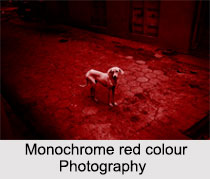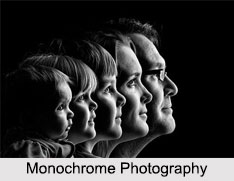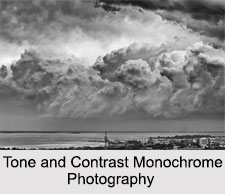 Monochrome photography is a type of photography where the image has produced a single shade, rather than recording the colours of the object which was photographed. It includes all forms of black-and-white photography, which bring into being images containing tones of grey shades ranging from black to white. Earlier, photographers had no alternative but to shoot in black and white, because it was the only available medium at that time.
Monochrome photography is a type of photography where the image has produced a single shade, rather than recording the colours of the object which was photographed. It includes all forms of black-and-white photography, which bring into being images containing tones of grey shades ranging from black to white. Earlier, photographers had no alternative but to shoot in black and white, because it was the only available medium at that time.
With the time Monochrome photography flourished. Contemporary black and white photography at its best is art and a lot of photographers regard it as the purest form of photography. It is recommended to shoot in RAW + JPEG format for Monochrome Photography.
The flattering and contrasting shades that bring a colour image to life are all decreased to black and white or shades of grey in a monochrome image. Black and white Photography is a very useful medium for landscape photography. It draws attention to the shapes and forms of the elements within the landscape, and the excellence of light.
Styles in Monochrome Photography
 There are certain types of photo that rely on colour for impact. Monochrome images may be produced in a number of ways. Following are the different styles in Monochrome Photography:
There are certain types of photo that rely on colour for impact. Monochrome images may be produced in a number of ways. Following are the different styles in Monochrome Photography:
Tone and Contrast Photography: The Monochrome photo"s subject works best when it has a varied range of black, grey and white shades. The dark and light areas in images create tone and contrast in a picture. Extended exposure shots work really fine in monochrome photography, in particular where there is moving water or clouds or moving subjects. The blurring of the movement also includes textural contrast with any solid objects in the frame and a tripod is needed to keep the camera at a standstill.
Lines, Shape and Form Photography: These are Monochromic images that have graphic elements, strong lines and geometric shapes which make magnificent subjects for black and white images. This always looks for lines that run crossways, horizontally or vertically through the image and create interesting compositions with them. Dodging and burning is a technique which helps in Monochromic images and is generally used to burn in or darken highlights and brighten the shadows. A silhouette works well in this type of photography.
Reportage/ Life Photography: These are Monochromic images that have a storytelling way of a happening through sporting, religious, musical or cultural elements to add weight and message to the photo. When colours are changed to black and white, they become the shades of grey. Light colours become highlights and dark colours become dark tones. Black and white photos have a timelessness that is appropriate for travel.
 Textures and Detail Photography: Monochromic images work well with textural walls such as brick, sandstone or whitewashed stone particularly when the subject is of a contrasting tone. Strong skies and clouds are also wonderful subjects. Texture is affected by the lighting conditions. Low raking light, typical of the golden hour of light close to sunrise and sunset, makes texture stand out gruffly.
Textures and Detail Photography: Monochromic images work well with textural walls such as brick, sandstone or whitewashed stone particularly when the subject is of a contrasting tone. Strong skies and clouds are also wonderful subjects. Texture is affected by the lighting conditions. Low raking light, typical of the golden hour of light close to sunrise and sunset, makes texture stand out gruffly.
Portraits Photography: People and the environment make strong subjects in black and white photography particularly when there is good contrast in their clothes, the background and surroundings. Midday light can be great for architecture but poor for portraiture. Without colour, attention is focused on the eyes and face and the textures of the subject`s clothes.
Monochrome Colour Photography: Monochromatic photography is not limited to black and white. For example Sepia filter. The sepia slowly asserts the tones of black and white images and transforms them into shades of reddish-brown. Monochromatic red expresses apprehension or unrest but also appears gentler in nature with the change of seasons. A monochromatic blue format can delicately allude to a subject"s state or highlight feature.
Black and white photography works well in nude clicks and by removing colour it helps to lift up the subject matter from something that is potentially loutish by treating the naked body as an art form. Monochrome photography denotes courageously expressing form, light and shadow. Sepia, blue or other toning effect is appropriate to produce a monochrome image.